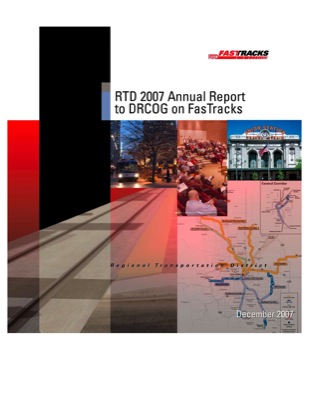According to Kevin Flynn of the Rocky Mountain News, Denver’s Regional Transit District (RTD) has admitted that it can’t build the FasTracks system that it promised when it asked voters for a tax increase in 2004. Even after cost-cutting measures, such as smaller stations and less security, the agency has previously admitted that the project that was supposed to cost $4.7 billion will actually cost $6.1 billion.
But Flynn expects the latest estimates, due to be made public next month, will be “substantially” higher. On top of that, the sale tax revenues that were expected to pay for FasTracks are coming in well short of predictions. As a result, RTD says it will have to either ask voters for more money, take more time to build the system, or cut back on the length of some of the lines.











